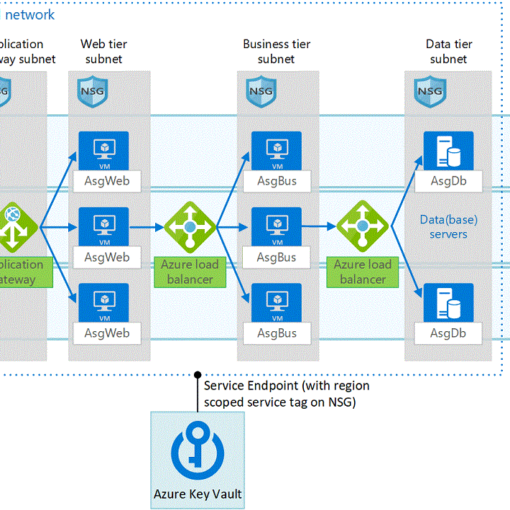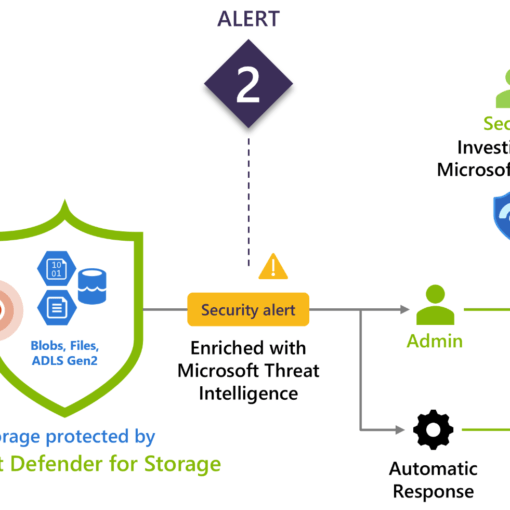
Azure Storage Lifecycle Management is a feature designed to manage and automate the movement and deletion of data within Azure Storage accounts. By defining rules, you can optimize storage costs and ensure that data is stored in the appropriate access tiers based on its usage. This guide will explore the core features, benefits, and provide a practical use case to illustrate how Azure Storage Lifecycle Management can be utilized effectively.
Core Features of Azure Storage Lifecycle Management
- Policy-Based Management
- Cost Optimization
- Data Retention
- Support for Multiple Storage Tiers
- Automated Actions
- Monitoring and Reporting
1. Policy-Based Management
Azure Storage Lifecycle Management allows you to create policies that define when and how data should be moved between different storage tiers or deleted. These policies are based on criteria such as age, last modified date, and blob type. Key Benefits:
- Customizable Policies: Create specific rules tailored to your data management needs.
- Flexible Criteria: Use various criteria to define policies, ensuring precise control over data management.
2. Cost Optimization
By moving data to lower-cost storage tiers when it becomes less frequently accessed, you can significantly reduce storage costs. Azure Storage provides several tiers, including Hot, Cool, and Archive, each designed for different access patterns and cost considerations. Key Benefits:
- Reduce Storage Costs: Automatically move data to cost-effective tiers.
- Optimize Resource Utilization: Ensure that data is stored in the most appropriate tier based on its usage.
3. Data Retention
Lifecycle management policies can also be used to enforce data retention requirements. You can specify policies to retain data for a certain period and then delete it once it is no longer needed. Key Benefits:
- Compliance: Ensure compliance with data retention policies and regulatory requirements.
- Automated Deletion: Automatically delete data that is no longer needed, reducing storage overhead.
4. Support for Multiple Storage Tiers
Azure Storage supports multiple tiers, including Hot, Cool, and Archive, each suited for different access patterns. Lifecycle management policies can move data between these tiers based on defined rules. Key Benefits:
- Hot Tier: For frequently accessed data.
- Cool Tier: For infrequently accessed data that is expected to be kept for at least 30 days.
- Archive Tier: For rarely accessed data that is expected to be stored for at least 180 days with flexible latency requirements.
5. Automated Actions
Automate the process of transitioning data between storage tiers and deleting obsolete data. This automation reduces manual intervention and ensures consistent application of lifecycle policies. Key Benefits:
- Reduce Manual Effort: Automate data management tasks.
- Consistency: Ensure policies are applied consistently across all data.
6. Monitoring and Reporting
Azure Storage provides tools to monitor and report on the status of lifecycle management policies. You can track the actions taken by these policies and adjust them as needed.Key Benefits:
- Visibility: Gain insights into the application of lifecycle policies.
- Adjustability: Fine-tune policies based on monitoring data.
Use Case: Managing a Media Archive
Company Overview:
A media company stores vast amounts of video content, including raw footage, edited videos, and final productions. The content is frequently accessed when first uploaded but becomes infrequently accessed over time. The company needs to manage storage costs while ensuring that all media is retained for potential future use. Challenges:
- High Storage Costs: Storing all media in the Hot tier is expensive.
- Access Patterns: Access to media content decreases over time.
- Data Retention: Certain media must be retained for regulatory or business reasons.
Solution Using Azure Storage Lifecycle Management:
- Policy Creation:
- The company creates lifecycle management policies to transition data based on access patterns and age.
- Policy 1: Move video content from the Hot tier to the Cool tier if it has not been accessed for 30 days.
- Policy 2: Move video content from the Cool tier to the Archive tier if it has not been accessed for 180 days.
- Policy 3: Delete raw footage if it has not been accessed for 365 days and is not marked for retention.
- Implementation:
- The policies are applied to the Azure Storage account containing the media content.
- As video content ages and becomes less frequently accessed, it is automatically moved to lower-cost storage tiers.
- Raw footage that is no longer needed is automatically deleted, freeing up storage space.
- Monitoring and Adjustment:
- The company uses Azure Storage monitoring tools to track the application of lifecycle policies.
- Reports are generated to ensure that policies are being applied correctly and to identify any areas for adjustment.
Outcome:
By implementing Azure Storage Lifecycle Management, the media company significantly reduces its storage costs while ensuring that all media content is managed according to its access patterns and retention requirements. Automated policies streamline data management, allowing the company to focus on producing and distributing content rather than managing storage infrastructure.
Example Code for Lifecycle Management Policy
{
"rules": [
{
"name": "MoveToCoolTier",
"enabled": true,
"definition": {
"filters": {
"blobTypes": ["blockBlob"],
"prefixMatch": [""]
},
"actions": {
"baseBlob": {
"tierToCool": {
"daysAfterModificationGreaterThan": 30
}
}
}
}
},
{
"name": "MoveToArchiveTier",
"enabled": true,
"definition": {
"filters": {
"blobTypes": ["blockBlob"],
"prefixMatch": [""]
},
"actions": {
"baseBlob": {
"tierToArchive": {
"daysAfterModificationGreaterThan": 180
}
}
}
}
},
{
"name": "DeleteOldRawFootage",
"enabled": true,
"definition": {
"filters": {
"blobTypes": ["blockBlob"],
"prefixMatch": ["rawFootage/"]
},
"actions": {
"delete": {
"daysAfterModificationGreaterThan": 365
}
}
}
}
]
}Azure Storage Lifecycle Management provides a powerful toolset for optimizing storage costs, ensuring data compliance, and automating data management tasks. By leveraging these features, organizations can efficiently manage large datasets, reduce manual intervention, and focus on their core business objectives.




